Tricia Middleton came late to showing in commercial galleries. In a career spanning fifteen years, her late-2014 exhibition at Jessica Bradley Gallery in Toronto was her first solo appearance in a commercial space. Of course, this isn’t terribly unusual here in Canada, with our underdeveloped art market and relative lack of collectors. Like many Canadian artists, Middleton has relied for most of her artistic life on the support of artist-run centers, Canada Council grants, and institutional exhibitions. Indeed, she won unusually early and extensive exposure from Canadian museums, appearing in a group show at the National Gallery of Canada (2007) and the inaugural Quebec Triennial at Montreal’s Musée d’art contemporain de Montréal (MACM) (2008) before her breakthrough solo exhibition, Dark Souls, at the MACM in 2009. Now, almost a year after Jessica Bradley’s lamented closure, Middleton is making her second commercial-gallery appearance courtesy of Montreal’s galerie antoine ertaskiran, titled Justine, after the Marquis de Sade’s tragic heroine.
It’s a stellar show, probably her best since The Call Is Coming From Inside the House (2011) at Toronto’s Mercer Union, and it marks an important shift in her practice: if her presentation at Jessica Bradley suggested how her space-transforming installations could be condensed into a more commercially-friendly sculptural format, Justine confirms Middleton’s drift away from architectural intervention towards a more intimate form of address.
My initial impression was that the exhibition reaffirms Middleton’s now-familiar vocabulary: there are floor-bound assemblages of discarded refuse (bottles and cans, mainly), organic matter (dried weeds), and decorative kitsch objects (thrift-store figurines, swirls of ribbon, fake flowers), all luxuriantly glazed with fragrant beeswax in Middleton’s trademark palette of cotton-candy pinks and blues, here bumped up with newer, hotter shades of fluorescent yellows and reds.
Also evident are a fresh crop of the vaguely anthropomorphic mounds (sometimes dubbed “stalagtiles” by the artist) that Middleton has exhibited before, this time in iterations of diminishing size. A central group of four towering, monstrously clerical figures brood in the main room, collectively titled Justine’s woods, searching for a place that you can never return to again (at your peril!!) (all works 2015). A series of smaller versions cluster in the second, smaller gallery, including three in adolescent size, all titled Thérèse: two child-size ones, Chubbies (noted with just a hint of judgment), and one Little baby dummy (noted without judgment, the baby can’t help being a little bit dumb).
Taken on their own terms, these mounds and piles are among Middleton’s most compelling to date. The biggest are imposing and packed with visual incident, swathed in wax-stiffened fabric like mummified priests, protruding flowers, and phallic growths, and dragging canisters like chamber pots. The smaller ones convey a pathetically comic variety of cuteness. They resemble squat and decaying but elaborately decorated confections, bearing candles and a sprig of weeds like little girls on their way to church.
What is more significant, though, is the way that Justine is composed of discrete works rather than the sprawling environments in which Middleton has specialized since 2009, when her work assumed the immersive scale that it has maintained until recently. She is also showing off a range of new approaches, including some of the first stand-alone crafted objects she has ever produced. The verbosely titled Dream rock, recalled with great precision and clarity the morning of September 1st, 2015, miscellaneous hotel room, Vancouver, is a complex, polychromed agglomeration of clay hunks, each bearing the imprint of a loose grasp, all latticed together into a drooping, geodesic honeycomb. The resultant form is a beguiling fusion of the mineral and the organic, a kind of hollow crystal head, resplendently disfigured. Middleton casually describes it as “handsy.”
There are also several tableaux: literally, assemblages of objects on and around tabletops and plinths over which Middleton’s usual wax frosting is applied sparingly, if at all. Table, really overstuffed, crying about it strikes me as the heart of the show: an unmodified copy of de Sade’s Justine is huddled by one of the table legs, next to a burned-out Diptyque candle and a handful of used tissues.
One piece stands out for being an even more intimate, unadorned collection of objects. Titled Smoking transference, Paris, it resembles the kind of humble shrines constructed for victims of roadside accidents. Snapshots from Middleton’s recent Parisian residency (a lone yellow balloon, views of the Seine, eye makeup smeared on a bed sheet) are unfussily taped to the wall over an array of personal effects including an empty wine bottle, casts of Middleton’s breasts, fingers, and toes, used matches, ribbons, stones, and a pack of cigarettes.
The loose scattering of objects in these assemblages emphasizes the contingency and particularity of individual components in a dramatically different way than her previous roomfuls of wax-encrusted matter, complicating the idea that she has simply swapped categories from installation to sculpture. As she told me in conversation, Middleton remains more interested in the viewer’s experience than the integrity of objects – “sculpture” isn’t important, things are. What has shifted for her is the idea of what it takes to produce that sense of immersive experience: its boundaries have shrunk from the exhibition space to the individual work. And her recent output (all the works in this show were produced within the last eight months) still maintains the ephemeral, self-cannibalizing quality that has defined her practice. Many of the pieces were built on site, and the sheer quantity of elements involved makes them difficult to move or recreate. What doesn’t sell will likely be destroyed and recycled into new assemblages, just as the stalagtiles here were built on the armature of earlier works.
This churn of creative destruction has been and remains the dominant theme of Middleton’s work. Her incessant piling up of junk mimics the diabolical ability of consumer capitalism to chew up and recombine its constituent parts, barreling forward on a constantly rising tide of waste and excess, human and ecological costs be damned. Middleton’s confusion of the anthropomorphic and the inorganic and her tendency towards confessional over-sharing (most evident in her text paintings, of which Justine has a few) reflect the degree to which human desire is implicated in this cycle of overproduction at the same time as it’s constituted by it. As much as Middleton’s work resembles self-portraiture (the artist as emotional trainwreck), it also reflects her abnegation of selfhood through identification with debased thing-ness.
Her points of references for these themes have always had an aroma of the 18th and 19th centuries about them: Rococo decadence and Victorian gothic, especially the phantasmagoric scenes conjured by Marx’s descriptions of capital as “dead labor that, vampire-like, only lives by sucking living labor.” That she would now turn to the nihilistic cruelty of the Marquis de Sade’s revolutionary-era writings seems only natural. But a focus on de Sade also highlights the gendered dynamics that have always been at play in her oeuvre and (sometimes problematically) in its reception.
In a text that accompanies the exhibition, Middleton writes (borrowing from Maurice Blanchot) that de Sade’s novel contribution to philosophy was to treat it as an “embodied self-experiment, using his own self destruction as the means to convey the work (with many actual victims wrought through this ‘process’, also).” For Middleton, to be an artist is inseparable from a certain sadistic position: any artistic technique is always “a kind of violence on the thing that it hasn’t asked for anyway.” Her previous titles sometime invoke this notion of the artist as agent of destruction, as well – take, for example, Form Is the Destroyer of Force, Without Severity There Can Be No Mercy, the name given to her 2012 exhibition at Oakville Galleries.
At the same time, the greater part of Middleton’s project involves identification with victims of the violence wrought by the forces of production – waste and kitsch being a metaphoric stand-in for all that is consumed, devalued, and cast aside. Middleton is both the abuser and rescuer of her own materials, the point being the surprising ability of those materials to endure. She has turned to de Sade’s Justine, then, as one of literature’s least sympathized-with victims. Subtitled The Misfortunes of Vice, de Sade’s novel presents Justine’s myriad woes as the natural consequence of her naive devotion to virtue; by contrast, the sequel introduces Justine’s sister Juliette, an amoral nymphomaniac murderer whose libertine ways earn her success and happiness.
In the theory-heavy climate of Middleton’s late-1990s art school years in Vancouver, de Sade was popular, as transgressive figures like he and Bataille were influential on the post-1968 generation of French philosophers like Foucault and Deleuze. Middleton recounts tales of being cornered at parties by young men eager to sing the praises of Juliette’s fearless depravity. Justine, needless to say, was not a popular object of identification. But for this show, she provided a new avatar for what Middleton was already doing: representing the necessarily violent processes of cultural and material production from the perspective of their casualties. If she had to leave Vancouver in order to embark on this project, it was partially because victimization did not count as acceptable aesthetics within the Vancouver art scene’s culture of intellectual mastery.
Granted, Vancouver has changed a great deal since the late 1990s, as has the culture of theory in the artworld. Nevertheless, Middleton’s generation of Canadian artists, whether schooled in Vancouver or not, came of age in a period dominated by conceptual approaches to art and saturated with intellectualism. Many of them (Geoffrey Farmer, Zin Taylor, Derek Sullivan, David Altmejd, Gareth Moore, and Katie Bethune-Leamen, to name just a few) emerged from that milieu with ambitious, idea-driven practices that they’ve carried forward into increasingly material-driven installation, assemblage, and sculptural work – a tendency broadly in tune with the prominence of similar sensibilities on the international stage over the last decade.
However, of the Canadian artists above, all of the men have been successful, to various degrees, in getting their names into international circles, while the women have yet to make that leap. Though Middleton has had a number of international residencies and won strong support from institutional and artist-run spaces at home, she seems to be at risk of hitting her Canadian ceiling. Though she should (and likely will) get another solo museum show in Canada, the work in Justine is some of the most compelling proof Middleton has yet offered that she deserves recognition beyond Canadian circles.
On the other hand, there would be no such thing as institutionalized sexism if good work was always rewarded on its own merits. But daunting odds haven’t stopped Middleton yet, nor are they likely to. She has often included brooms in her assemblages, perhaps as a nod to the Sorceror’s Apprentice, the classic trope of the inanimate object that comes to life and escapes its master’s control to wreak havoc. Justine has one, too, standing at attention amid a pile of sparkly floor scraps. It’s called Broom with extracted pieces of value, but it also has a subtitle: this broom will stop at nothing to get what he believes is his.

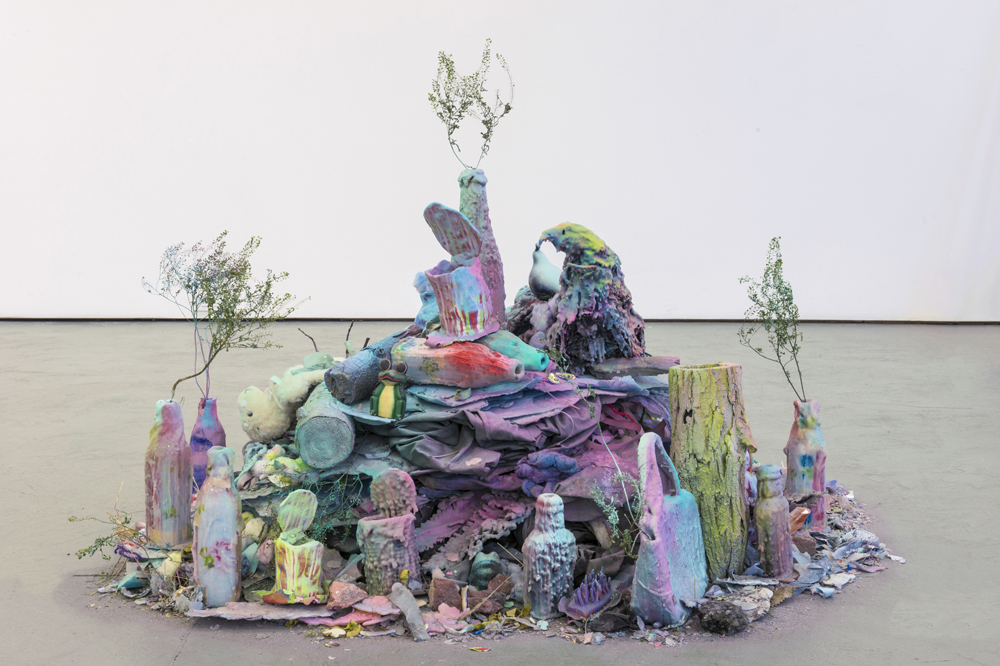
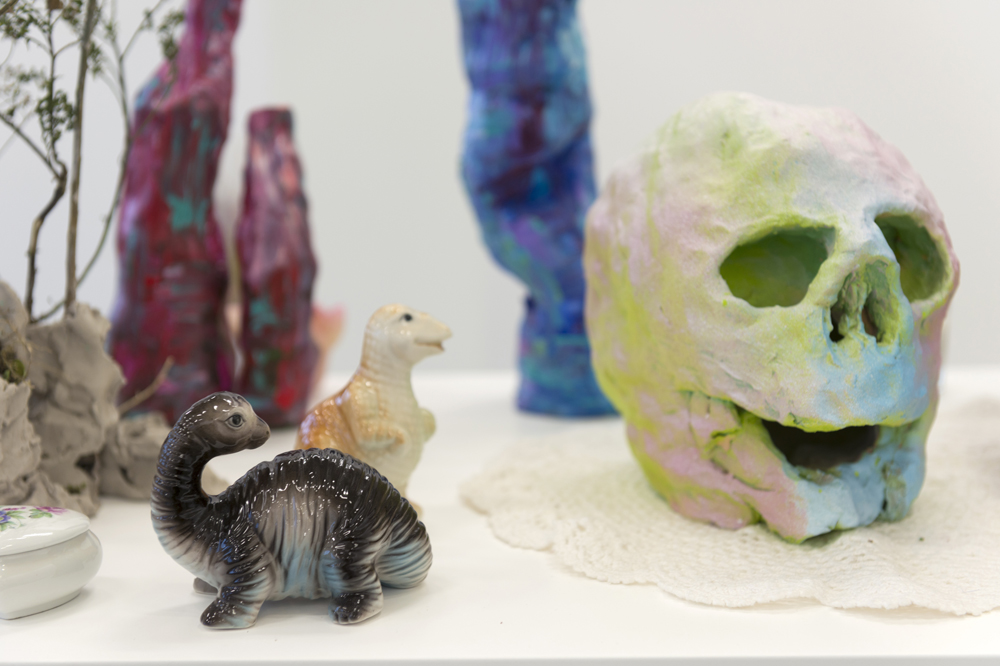
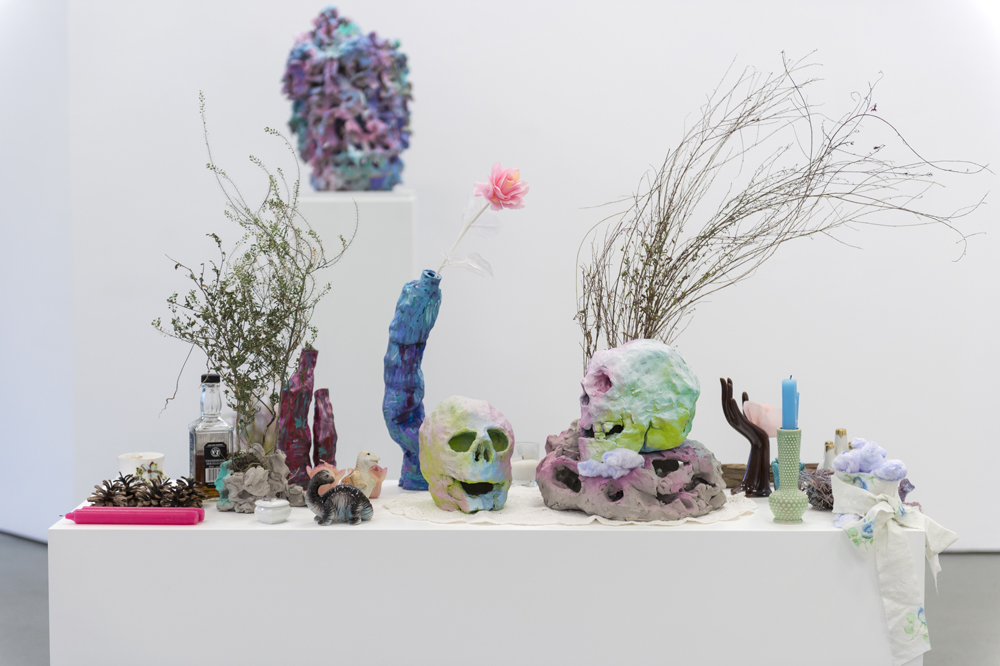
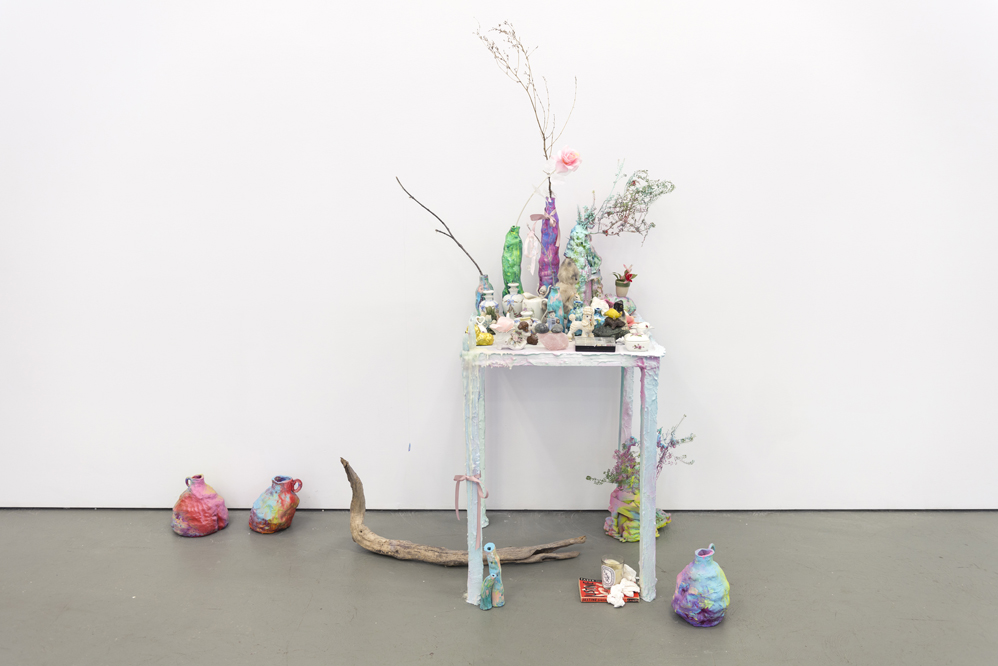
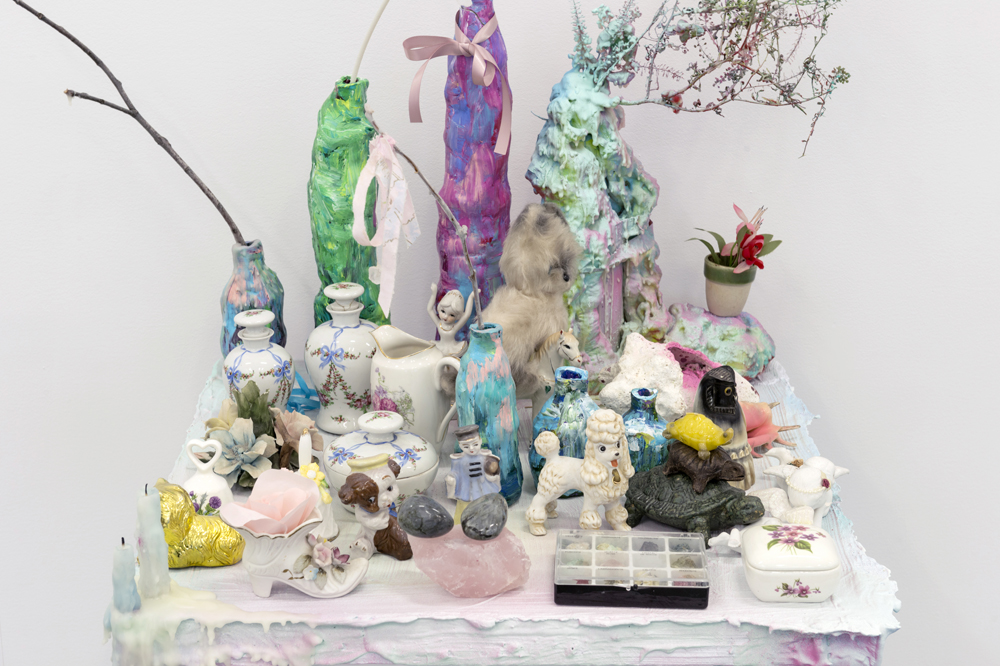
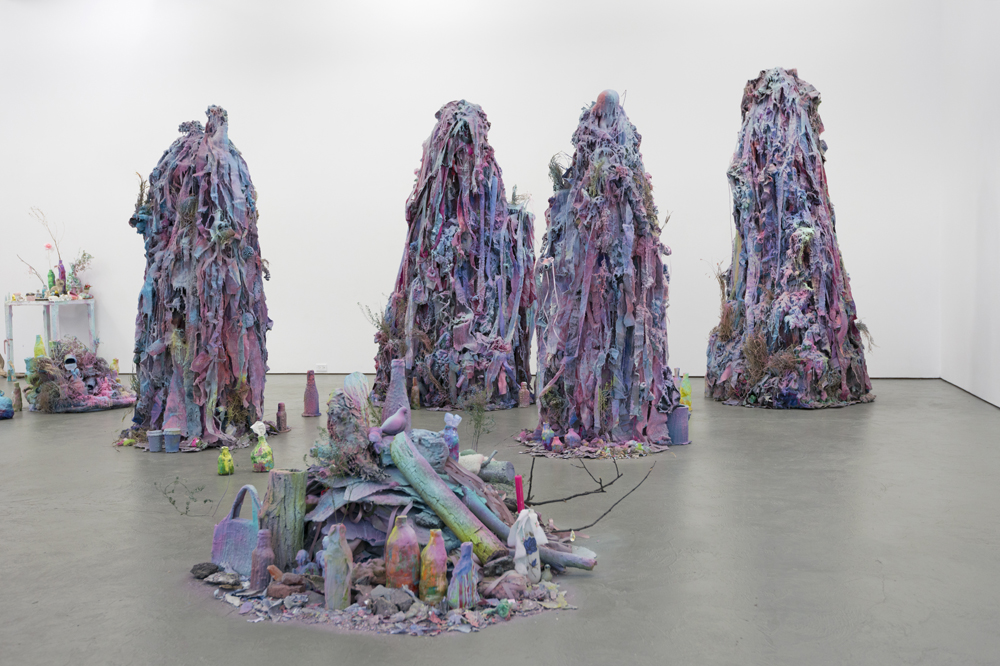
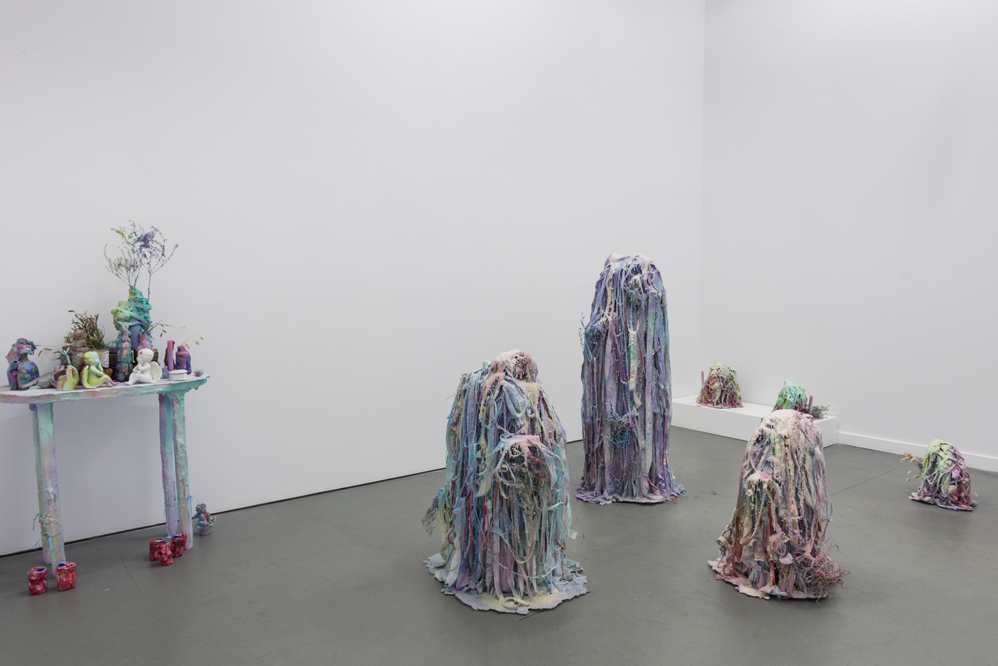
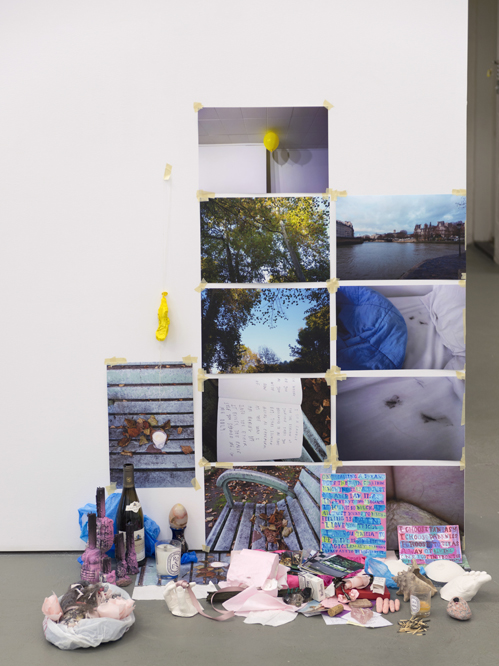
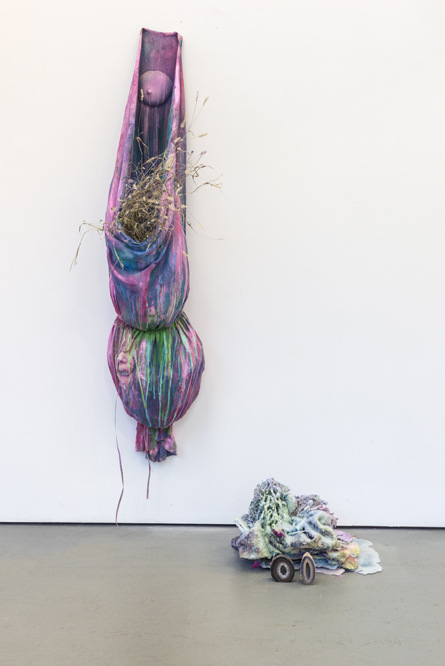
























1 Comment